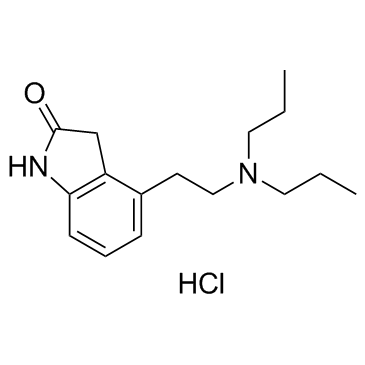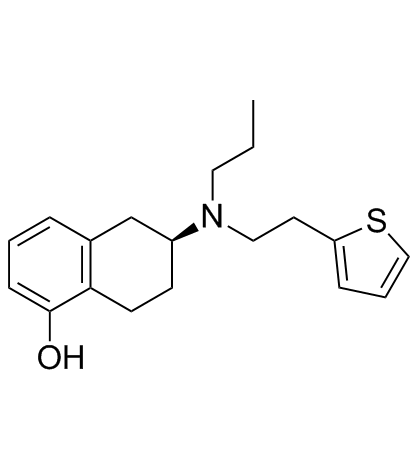Impulse control disorder in patients with Parkinson's disease under dopamine agonist therapy: a multicentre study.
Pedro J Garcia-Ruiz, Juan Carlos Martinez Castrillo, Araceli Alonso-Canovas, Antonio Herranz Barcenas, Lydia Vela, Pilar Sanchez Alonso, Marina Mata, Nuria Olmedilla Gonzalez, Ignacio Mahillo Fernandez
Index: J. Neurol. Neurosurg. Psychiatr. 85(8) , 840-4, (2014)
Full Text: HTML
Abstract
Impulse control disorders (ICDs) encompass a wide spectrum of abnormal behaviour frequently found in cases of Parkinson's disease (PD) treated with dopamine agonists (DAs). The main aim of this study was to analyse ICD prevalence with different DAs.We carried out a multicentre transversal study to evaluate the presence of ICDs in patients with PD chronically treated (>6 months) with a single non-ergolinic DA (pramipexole, ropinirole, or rotigotine). Clinical assessment of ICD was performed using the Questionnaire for Impulsive-Compulsive Disorders in Parkinson's disease.Thirty-nine per cent of patients (91/233) fulfilled the clinical criteria for ICD. The group of patients with ICD symptoms (ICD+) differed from those without ICD symptoms (ICD-) in younger age and type of DA intake. Oral DA treatment (pramipexole and ropinirole) was associated with higher risk of ICDs compared with transdermal DA (rotigotine): 84/197 (42%) patients treated with oral DA developed ICD, versus 7/36 (19%) patients treated with transdermal DA (Fisher's exact text <0.01). In univariate analysis, a younger age (p<0.01), treatment with rasagiline (p<0.05), and especially treatment with an oral DA (pramipexole or ropinirole) (p<0.01) were significantly associated with ICD. Multivariate analysis confirmed that oral DA remained significantly associated with ICD (p: 0.014, OR: 3.14; 1.26-7.83).ICD was significantly associated with the use of the non-ergolinic oral DA (pramipexole and ropinirole) when compared with transdermal non-ergolinic DA (rotigotine). Since pramipexole, ropinirole and rotigotine are non-ergolinic DAs with very similar pharmacodynamic profiles, it is likely that other factors including route of administration (transdermal vs oral) explain the difference in risk of ICD development.Published by the BMJ Publishing Group Limited. For permission to use (where not already granted under a licence) please go to http://group.bmj.com/group/rights-licensing/permissions.
Related Compounds
| Structure | Name/CAS No. | Molecular Formula | Articles |
|---|---|---|---|
 |
Ropinirole hydrochloride
CAS:91374-20-8 |
C16H25ClN2O | |
 |
Rotigotine
CAS:99755-59-6 |
C19H25NOS |
|
Sustained release microspheres of ropinirole hydrochloride: ...
2011-12-01 [Acta. Pharm. 61 , 363-376, (2011)] |
|
Serotonergic and dopaminergic mechanisms in graft-induced dy...
2012-09-01 [Neurobiol. Dis. 47(3) , 393-406, (2012)] |
|
Structure-activity relationship study of N⁶-(2-(4-(1H-Indol-...
2012-06-28 [J. Med. Chem. 55(12) , 5826-40, (2012)] |
|
Three cases of impulse control disorder in Parkinson's disea...
2013-01-01 [Ir. Med. J. 106(1) , 24-5, (2013)] |
|
Ropinirole does not affect plasma arginine vasopressin level...
2012-01-01 [Neuro Endocrinol. Lett. 33(7) , 680-3, (2012)] |